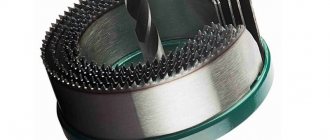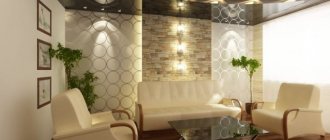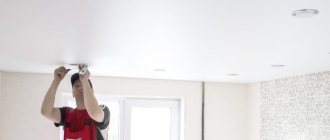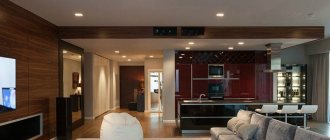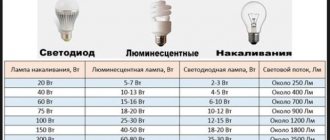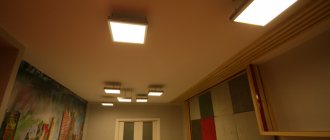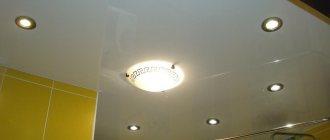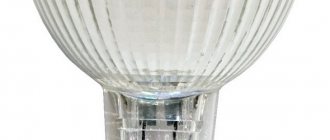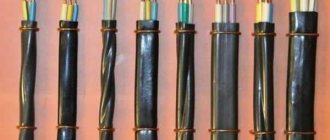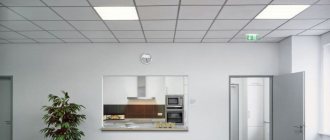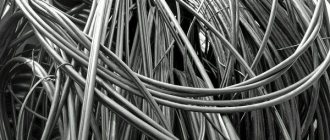Spotlights (another name is spots) have become a characteristic detail of modern rooms. Sometimes they are used to organize main or background lighting, sometimes their role is to provide detail, to draw attention to the front of a cabinet or a picture on the wall. Spot lighting in the interior is a great opportunity to make rooms stylish and cozy.
Location of lamps around the perimeter Source cms.giadinhtre.vn
Types of spotlights
Spotlights are usually divided into types according to the following set of characteristics: installation method, adjustment and functionality.
Installation method
Invoices
External or overhead spotlights are more often used on frameless bases:
- concrete ceiling;
- brick walls.
They are indispensable in cases where it is necessary to improve the interior without interfering with the dimensions of the room.
The design of the surface-mounted lamp consists of a mounting platform and a housing with a diffuser. Its features involve installing a mounting plate above a hole of smaller diameter than the housing itself. Otherwise, it will not be covered by the lampshade. It is important to connect the ground wire to the strip. The housing is fixed to the mounting platform using side screws after connecting the wires.
Built-in
Built-in or mortise models - the type installed on frame bases:
- plasterboard structures of all types;
- panel or slatted ceilings and walls;
- stretch ceilings;
- furniture partitions;
- wall niches.
Alternative options for using built-in points are in the floor, on stairs, in swimming pools, and bar counters.
The configuration of the luminaire is a body with built-in clamps for lamps and fastening elements. No additional reinforcement is required - the legs open behind the plane when installing the lampshade. The design involves mounting the housing inside a pre-prepared hole with wires connected to the exit point.
Hanging
The body of pendant spotlights is mounted at a distance from the mounting surface. The lamp is hung on a decorative power cable attached to the ceiling. No parts that can strengthen the structure are required. But it is recommended to supplement massive versions of lamps with mounting strips during installation - improvised ones made of timber or metal are also suitable.
Pendant lamps are suitable for installation on all types of bases and are often installed as an independent decorative element.
Adjustment type
Further division is based on the type of design, angle and intensity of the light flux.
- Rotating lamps. Used to create directional lighting with smooth angle adjustment. It is worth considering strengthening the fastening points during installation, since mobility implies accelerated wear of the material.
- Fixed models illuminate part of the room without adjusting the direction of the light flow.
- Swivel-and-slide devices are suitable for changing accents and lighting areas at the owner’s discretion.
- Cardan LEDs are notable for their advanced adjustment of the strength and direction of the flow. The housing houses several diode lamps simultaneously.
- Spots are lamps with a rotating mechanism that provide directional light. They are flexible and manually adjustable. Interesting solutions with different numbers of lampshades on a common fastener - six or more. They are arranged in the form of geometric shapes or chandeliers. Spots are available in built-in and surface-mounted versions.
- Downlight is used for spot lighting and emphasizing specific interior elements.
Functionality
The functional division of spotlights into types is determined by the basic configuration:
- possibility of remote control;
- extended lighting angle;
- adjustment in different planes;
- depth of installation (depending on the type of fastener);
- moisture and dust protection;
- dimming to adjust lighting.
The presented basic types of points are selected taking into account the characteristics of a particular room and interior elements.
Lamps for suspended ceilings
Spotlights are more suitable if you need to provide additional lighting inside large rooms. The size of the niche for the device will depend on the type of lamp. For fluorescent or halogen lamps, the height of the stretch ceiling should be 8-12 centimeters lower than the main one. In the case of LED lamps, this figure decreases to 6 cm.
Why are recessed rotating lights popular?
Their use is suitable when creating an accent in a specific place. The designs are popular due to their ability to save space. They are easy to install in a specific location. The only drawback is the increased price.
Installation features
Depending on the installation method, luminaires can be built-in or surface-mounted.
- Built-in. A special hole is made in the ceiling for their installation. Part of the housing is hidden behind the ceiling, part of the device remains outside. Some models have only decorative rims. But the models do not change the general essence of the device.
- Invoices. Suitable for suspended ceilings only. They are attached to the main plane, located at a level below the surface.
LED spotlights are not as difficult to choose as it seems at first. You need to decide which design is more suitable for a particular room. It is for this reason that there are more models on the market. The greater the protection of products from external factors, the better. It is not recommended to install devices with a lower indicator; this will only make the user lose. When arranging interiors, owners are increasingly abandoning massive chandeliers in favor of multi-component systems, when they install a large number of small LED lamps.
Operating principle and design
The spotlight consists of three elements:
- a base that is attached to the surface;
- housings with clamps;
- connecting cable.
The vast majority of devices have a solid type housing.
Spotlights for incandescent lamps are structurally divided into two types:
- The open type is characterized by a U-shaped design.
- The closed type involves the use of a casing to protect the lamp from condensation; it is optimal for use in damp rooms.
Additional protection of the housing from high operating temperatures is not required. It is provided by the features of lamps built into the points. Their flasks are coated on the outside with mirror amalgam, which serves to protect the structure from overheating. The back surface of the bulb is matte, which promotes uniform distribution of light.
For correct operation of points with halogen lamps, a transformer is required. The principle is simple: the more lamps, the more powerful the transformer is needed. An induction or electronic option is suitable. During installation, the distance from the lamps to the device is taken into account - if it exceeds two meters, up to 100 W of power is lost due to resistance.
Features of installation in various ceilings
Recessed spotlights come in mortise and pendant types. To install the former, special holes are cut out in the canvas, the diameter of which coincides with the dimensions of the lighting fixture. Installation is possible only in suspended, slatted or plasterboard ceilings.
The step-by-step process for installing recessed luminaires in suspended ceiling structures is as follows:
- After the main array of the ceiling structure is installed, electrical wiring is laid. It is necessary to bring the wires to the place where the lamps will be placed, leaving a margin of at least 10-15 cm.
- Holes are cut for the lampshades. This is done either in advance before installing the canvas, or after, when the ceiling is completely assembled. Regardless of the approach, it is necessary to apply markings to the canvas, indicating where the lamps will be located.
- The devices are installed - the wiring is taken out and connected to the housing, after which the device itself is attached to the ceiling.
- At the final stage, the lamp and decorative part are connected.
For mounting pendant lamps, brackets and hangers are used. The bracket is attached to the ceiling, a suspension is connected to it, and a lighting fixture is installed on the lower part of it. Here it is important to pay attention to the length of the suspension - it should be sufficient to go through the entire inter-ceiling distance and provide the necessary gap between the lamp and the tension fabric.
Characteristics
Spotlights have a number of features:
- Small angle of light dispersion (average 30 degrees). It must be taken into account that one point will not be able to provide the room with a sufficient amount of light, even in cases when we are talking about bathrooms.
- Cone-shaped stream of light. For uniform distribution, it is necessary to intersect habitats above chest level.
What's with the spotlights included?
The luminaire is supplied with a set of elements and accessories sufficient to connect to an active power circuit:
- Frame. Additionally, it comes with a lamp holder or diffuser.
- Mounting strip or mounting spacers.
- The terminal block is often solid, but sometimes the manufacturer includes only a couple of terminals in the kit.
The basic composition does not always include a lamp; more often it is purchased separately.
Lamps for spotlights
Spotlights are available in 3″, 4″, 5″ and 6″ fitting diameter variations. The values are in inches - according to the international standard. Can be used with different types of lamps:
- incandescent;
- compact fluorescent;
- halogen;
- LED.
The installation of lamps of different types is usually provided in the same housing. When purchasing, check whether the design is compatible with the selected type of lamp.
Incandescent lamps
They are most common in spotlights due to their low price and ease of replacement.
A number of disadvantages inherent in this type of lamps are slowly pushing them out of the market:
- “gluttony” in terms of electricity consumption;
- the fastener size is at least 7 cm, requiring a frame of appropriate depth.
Replacing incandescent lamps at points is the usual screwing into the lampshade.
Halogen
Interesting choice of power combination and long service life. A tungsten halogen device produces more light per watt than a standard incandescent bulb. Available in two voltage variations: linear at 220 or 110 W and low at 12 volts.
Halogen variations outperform incandescent lamps in these indicators:
- reduced energy consumption;
- durability;
- higher brightness;
- shallow fastening depth – 2–4 cm.
Disadvantages of halogen lamps:
- high heat;
- sensitivity to grease contamination;
- formation of high temperature zones.
Installation is carried out with gloves or use the cloth supplied.
Replacement:
- It is necessary to remove the decorative lampshade, if provided in the design.
- This will provide access to the locking ring - it can be removed by gently squeezing the two protruding tabs.
- After this, the light bulb itself is unscrewed.
LED spotlights
LED lighting technologies are known as a practical and durable alternative to incandescent lamps.
Their indicators contribute to this:
- record low energy consumption;
- no overheating, meaning full compatibility with all types of suspended ceilings;
- safety - suitable for use in children's rooms and bedrooms.
Luminescent
Optimal for simulating natural light. Their high price is offset by durability. The main disadvantage is that they are environmentally unsafe due to the presence of mercury. They are used with caution in residential areas.
Each type of lighting has a specific set of advantages and disadvantages. The most important factors when choosing a lamp:
- Light output is the ratio of the luminous flux power from the lamp to the same Watt indicator at the input.
- Preferred service life, difficulties in replacement and disposal.
- Maintaining luminous flux - this factor is important in order to have a certain minimum level of illumination.
- Need for auxiliary equipment.
For rational energy consumption, a dimmer (rheostat) is installed in addition to the lamps. This is a power switch that smoothly adjusts the brightness of the lighting.
Advantages
Technical advantages are based on the following points:
- Possibility of partial or directional lighting to emphasize individual areas.
- Uniform illumination without shadowed corners.
- The service life is significantly longer than that of conventional chandeliers.
- Safe and economical supply of light, especially in variations with a voltage of 12 volts.
- Different types of light bulbs can be mounted into spotlights.
- Beauty and compactness. Thanks to their small size, they will look stylish and elegant in any room.
- Reduced energy consumption compared to conventional lighting devices, with high efficiency.
- Reliability. Resistance to vibrations and mechanical damage.
- High luminous flux utilization.
- There is no glare, noise or flickering during operation.
Calculation of the number of lamps to illuminate a room
There is a simple formula that allows you to calculate the number of lighting fixtures:
N = (S * W) / P, where:
- S – room area;
- W – specific power of light flux (standard, taken from the reference book);
- P – power of 1 lamp.
On ceilings, it is better to install lighting fixtures symmetrically, evenly over the entire area, which will eliminate shading of individual zones. It is important to make indents of 60-80 cm from the walls, more if there is furniture. The dimensions of the lamps are also taken into account - large ones are placed no closer than 1.6-1.8 m to each other.
Flaws
Spot lighting has a number of disadvantages.
- Difficulty in organizing and designing a lighting system.
- The need to install or replace transformers significantly complicates installation and calculations. The requirement to maintain a distance from the device usually means partial reassembly of the frame and embroidering of the finished (sometimes covered with decor) plane. When replacing, the requirements are similar.
- The need to use more devices to create general lighting.
- Most types of spotlights require modifications to the ceiling or wall design. For built-in models, installing a frame is indispensable.
- If the spotlight overheats, it can damage the PVC stretch ceiling.
- Difficulty in maintaining a large number of lampshades.
Built-in and overhead
Based on the type of installation, spotlights can be divided into built-in (mortise) and surface-mounted.
The first ones are used when general light is needed, without an emphasis on lighting fixtures as decoration. Recessed luminaires are suitable for various types of ceilings: suspended, suspended, plasterboard.
In tension ones, they are placed both above and below the ceiling sheet. The main thing is to correctly take into account the technical characteristics of the light bulbs used so that there is no unwanted overheating. Any type of ceiling requires a preliminary design, since you need to know exactly whether it will be single-level or multi-level. The number of spotlights and their power will depend on this.
Surface-mounted lamps are most often used by specialists to create general lighting, and they can use any type of lamp. The decorative effect of overhead spotlights is incredibly diverse, because it completely depends on the imagination of the designer, who can decorate any room with them.
How to choose spotlights
Standard spotlights have a regulated protection indicator. In the instructions or on the packaging it is designated by the abbreviation IP.
Abbreviation numeric values
Two numbers are placed next to the mark:
- The first number is protection against solid particles entering the structure. The range of values is from 0 to 5. Zero implies no protection. Values from 1 to 4 correspond to particle fraction sizes in descending order, ranging from 50 to 1 mm. Number 5 – protection against dust.
- The second number is the degree of moisture protection, standard values are from 0 to 8. The indicators correspond to the intensity of the water flow. Zero means no moisture protection, and 8 means that the device is protected from prolonged immersion in water.
Additional factors
- Choose equipment in the same style from one manufacturer.
- Check that the reflective and cooling element is complete.
- Low-power 12 W devices require the installation of a step-down transformer.
- The cable cross-section is selected according to special tables, based on the total power and number of lamps.
- Built-in ceiling models should be selected in advance in order to correctly calculate the height of the frame, taking into account the fastenings and overall dimensions of the transformer.
The rules for placing lighting fixtures determine their quantity and configuration when choosing.
Which ones are better
The simpler the design of the lamp, the easier it is to maintain. More often this applies to kitchen lighting fixtures, on which, in addition to dust, grease deposits accumulate over time.
- Rounded models are better suited for suspended ceilings - during their installation and subsequent maintenance, damage to the material by sharp corners is unlikely.
- Devices with incandescent lamps project bright, familiar light, but their mounting is not very compact. Ceiling and wall frames are mounted taking into account the size of the fasteners, as a result, precious centimeters of height or space of the room are “eaten up”.
- Lamps for halogen lamps can be built into the frame at a close distance from the surface - only 4 cm is lost. Additional advantages are reduced energy consumption, brightness and durability. Lamps with a ceramic socket and glass diffuser do not create problems with overheating.
The use of spotlights in conjunction with suspended ceilings implies a limitation on the power of the installed lamps. For halogen options, the threshold values are 35–40 W. For incandescent lamps this figure should not exceed 60 W.
How to use
The attractiveness of lamps in the interior and their service life depend on proper operation.
Recommendations for placement
- The lamps are mounted at a distance of 30–40 cm from each other and at least 20 cm from the corners of the room for uniform distribution of illumination.
- For suspended ceilings, energy-saving or LED lighting options are used, which heat up less.
- Dots along the perimeter of the walls will visually expand the space of the room. In this case, no ceiling lighting is required.
Care
- Once a year, you will need to clean the devices and check the integrity of the electrical wiring.
- Dry cleaning should be done using cotton cloths.
- Do not use solvents or abrasives for cleaning.
When replacing lamps, check the maximum permissible power, this will protect the backlight from overheating and fires.
Lamp layout diagrams
Designers offer a number of classic ceiling lighting schemes using LED devices:
- oval;
- rectangular;
- square;
- round with a central element;
- two semicircles;
- in the form of a cross;
- along the perimeter of the room;
- waves;
- an arc with a center.
First you need to draw a layout diagram on paper. The chandelier is hung in the center or in the middle of the work area. These schemes can be combined to create unusual options. In the corridor it is better to mount the lamps in a line or in pairs. For convenience, the kitchen space is zoned in the form of circles, ovals, and arcs. Waves of dotted luminous elements look attractive in the bedroom. The best option for a child’s room is original designs made from lamps. In the bathroom, lights are usually installed around the perimeter and in the center.
With the help of LED lighting devices, you can easily organize the main and additional lighting. It is important to take into account all the parameters in order to buy suitable devices, then they will last a long time and trouble-free.
Malfunctions and repairs
Common malfunctions in most cases come down to incorrect operation of installed accessories.
Some time after switching on the device stops working
A possible reason is overheating of the transformer and subsequent tripping of the protective shutdown. In this case, it will be necessary to replace the transformer with a more powerful version or move it to an open space to improve heat dissipation. Alternatively, replace the current transformer with several units of lower power.
Lamps flickering when lights are off
This drawback is inherent in LED or energy-saving lamps and manifests itself when incompatible with an illuminated switch. Solving the problem will require replacing the fittings or the type of lamps used.
Frequent burnout
There are a number of reasons why this can happen: from frequent power surges to imported lamps designed to operate on a 220 V network. To solve the problem, install protection devices or replace the lamps with energy-saving or low-voltage ones.
Doesn't turn on or goes out immediately
A common reason for this phenomenon is a simple overload of the transformer when too many devices are connected at the same time. It will be necessary to replace the device or increase the number of transformers.
The lamp melted and cracked
It is possible that the power of the installed lamp exceeds the permissible limit. You can check the indicators on the boxes if they have been preserved. You will need to install lamps of the correct power.
Manufacturers of spotlights
The selection includes representatives of different price categories:
- Ambrella. It has been producing its own line since 2012. Ambrella light products are distinguished by their original design, and the bonus is a level of service comparable to the European one. Budget models.
- ARTE LAMP. The Italian company ARTE LAMP has been supplying interior lighting products since 2001 and is represented in more than 20 countries around the world. Average price level.
- Donolux. A Russian company with 15 years of experience, producing economical lamp models. Materials are supplied by global manufacturers. The product quality is at a decent level. The pricing policy is not designed for the middle class.
- EGLO. An Austrian company specializing in the creation of lighting systems, an assortment of 3,000 items to suit every taste and budget. Budget models and mid-price options are available.
- Elektrostandard. Another representative of Russia, on the market since 1998. Products are traditionally of high quality. Price level is in the standard range.
- Lightstar. A European company offering interesting design solutions in lighting. Present in Russia since 2001. The pricing policy is moderate.
- LUSSOLE. Lussol is an inexpensive Italian product presented in an elegant and extraordinary format.
- Massive. Belgian appliances with a laconic design. The company offers series for each room at average prices. Noteworthy are the options adapted to children's interiors.
- Novotech. A reliable Hungarian company, present on the market for 20 years. Offers special lighting series for bathrooms. Budget pricing policy.
After you decide on the functionality and model, you will need to calculate the number of lamps and make a diagram of their location in the room.
Common installation options: around the perimeter, at a distance from corners and walls of 20 cm, in a checkerboard pattern or in the shape of geometric shapes. Advertising from sponsors: // // //
